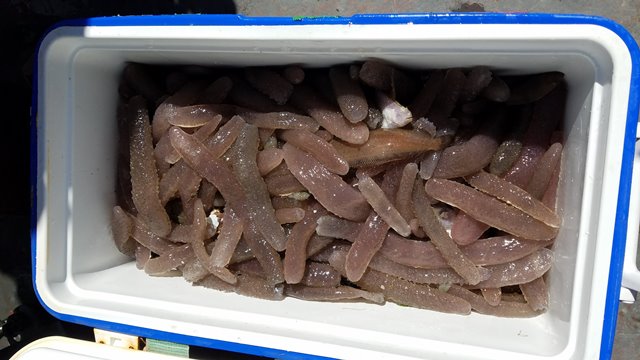Dude! There’s something totally tubular about the West Coast right now.
It’s the sea pickle. Many, many sea pickles, actually.
The translucent — and tubular — creatures are actually called pyrosomes. They are appearing in unusually large numbers in western coastal waters from California to Alaska, posing serious problems for fisherman and puzzling scientists.
“There’s been unusual things happening in the ocean,” said Michael Milstein, a spokesman for the National Oceanic and Atmospheric Administration.
While no one knows for sure, the plethora of pyrosomes is most likely a result of a change in water temperature. “Somehow these guys drifted into the picture and multiplied … it’s still something of a puzzle,” Milstein said.
Warming waters may be the cause
Pyrosomes are usually found in more tropical waters, but started to appear on the West Coast in 2014. They are made of many small multicellular organisms, “linked together in a tunic to form a tubelike colony that is closed on one end,” according to a release from the Northwest Fisheries Science Center.
A research trip by NOAA in May showed large populations of pyrosomes stretching from approximately 40 to 200 miles off the Oregon coast.
Aaron Baldwin, a fishery biologist for the Alaska Department of Fish and Game, said fishermen were seeing pyrosomes “every few inches.”
“They were reporting them everywhere,” he said.
Fishing nightmare
Milstein said the beauty of the creatures can be startling. “When looking at underwater pics of these guys, it’s kinda like looking at the stars.”
Not only are pyrosomes large in numbers, they can also be more than two feet long, leading to complications for fishing boats. Milstein said he’s heard of fishermen towing a net for five minutes and picking up 60,000 pyrosomes. “We’ve heard stories of some nets breaking under the weight of these things.”
According to Baldwin, the pyrosomes first appeared this February, stopping some fishermen in their tracks. “People were not fishing,” Baldwin said, “just returning to port.”
While the number of pyrosomes is down in Alaska from where it was earlier in the year, Baldwin said people are still feeling the impact they had. “Some of these seasons are pretty short,” he said. “So delays like this can have a big impact.”
